

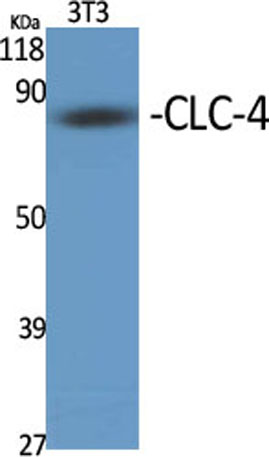
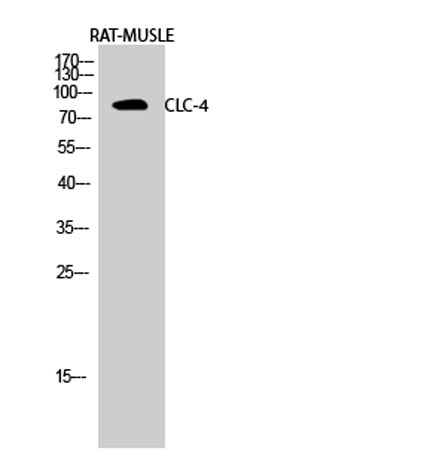
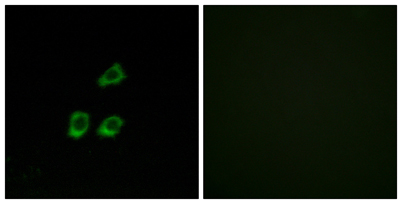
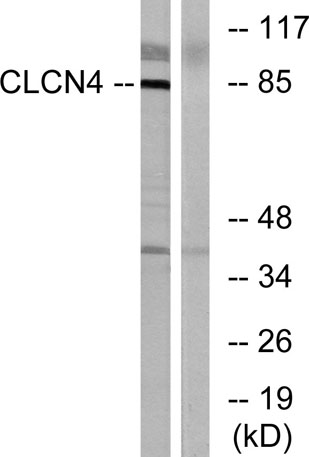
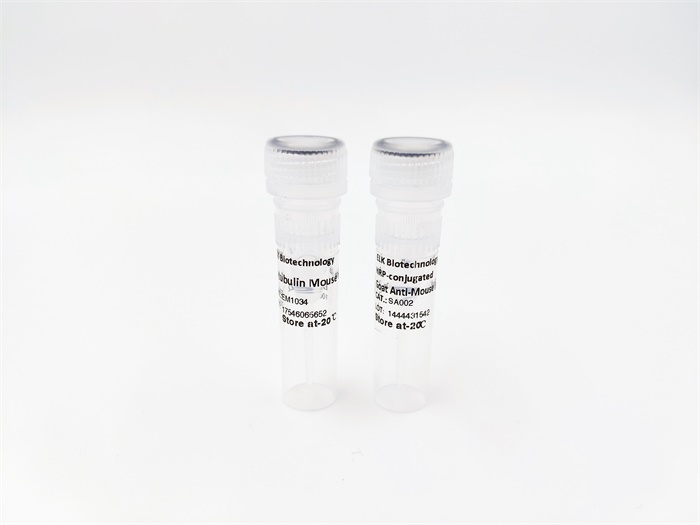



CLC-4 rabbit pAb
 One-click to copy product information
One-click to copy product information$148.00/50µL $248.00/100µL
| 50 µL | $148.00 |
| 100 µL | $248.00 |
Overview
| Product name: | CLC-4 rabbit pAb |
| Reactivity: | Human;Mouse;Rat |
| Alternative Names: | CLCN4; H(+)/Cl(-) exchange transporter 4; Chloride channel protein 4; ClC-4; Chloride transporter ClC-4 |
| Source: | Rabbit |
| Dilutions: | Western Blot: 1/500 - 1/2000. Immunofluorescence: 1/200 - 1/1000. ELISA: 1/40000. Not yet tested in other applications. |
| Immunogen: | The antiserum was produced against synthesized peptide derived from human CLCN4. AA range:221-270 |
| Storage: | -20°C/1 year |
| Clonality: | Polyclonal |
| Isotype: | IgG |
| Concentration: | 1 mg/ml |
| Observed Band: | 85kD |
| GeneID: | 1183 |
| Human Swiss-Prot No: | P51793 |
| Cellular localization: | Early endosome membrane ; Multi-pass membrane protein . Late endosome membrane ; Multi-pass membrane protein . Endoplasmic reticulum membrane ; Multi-pass membrane protein . Lysosome membrane ; Multi-pass membrane protein . Recycling endosome membrane ; Multi-pass membrane protein . Localizes to late endosome membrane, lysosome membrane and recycling endosome membrane in the presence of CLCN3. . |
| Background: | chloride voltage-gated channel 4(CLCN4) Homo sapiens The CLCN family of voltage-dependent chloride channel genes comprises nine members (CLCN1-7, Ka and Kb) which demonstrate quite diverse functional characteristics while sharing significant sequence homology. Chloride channel 4 has an evolutionary conserved CpG island and is conserved in both mouse and hamster. This gene is mapped in close proximity to APXL (Apical protein Xenopus laevis-like) and OA1 (Ocular albinism type I), which are both located on the human X chromosome at band p22.3. The physiological role of chloride channel 4 remains unknown but may contribute to the pathogenesis of neuronal disorders. Alternate splicing results in two transcript variants that encode different proteins. [provided by RefSeq, Mar 2012], |
-
 Western Blot analysis of various cells using CLC-4 Polyclonal Antibody diluted at 1:500
Western Blot analysis of various cells using CLC-4 Polyclonal Antibody diluted at 1:500 -
 Western Blot analysis of RAT-MUSLE cells using CLC-4 Polyclonal Antibody diluted at 1:500
Western Blot analysis of RAT-MUSLE cells using CLC-4 Polyclonal Antibody diluted at 1:500 -
 Immunofluorescence analysis of HUVEC cells, using CLCN4 Antibody. The picture on the right is blocked with the synthesized peptide.
Immunofluorescence analysis of HUVEC cells, using CLCN4 Antibody. The picture on the right is blocked with the synthesized peptide. -
 Western blot analysis of lysates from MCF-7 cells, using CLCN4 Antibody. The lane on the right is blocked with the synthesized peptide.
Western blot analysis of lysates from MCF-7 cells, using CLCN4 Antibody. The lane on the right is blocked with the synthesized peptide.

 Manual
Manual